Microsoft Announces Windows 8.1 Update - Desktop as a First Class Citizen
by Brett Howse on April 3, 2014 9:00 AM EST- Posted in
- Software
- Operating Systems
- Microsoft
- Windows 8
- BUILD
- Windows 8.1
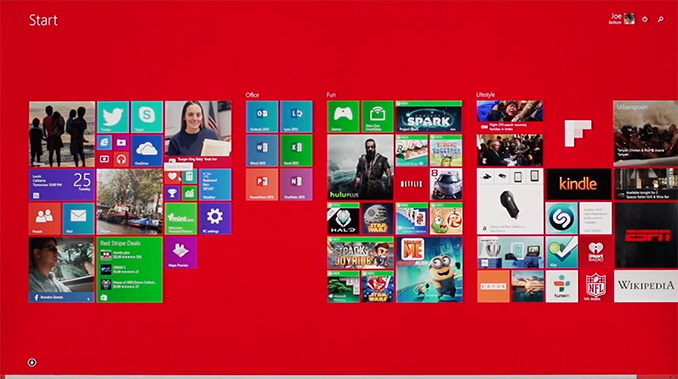
Microsoft’s day 1 keynote for the BUILD developer conference detailed an update to Windows coming on the next scheduled patch Tuesday called 8.1 Update. Notice it’s not called Update 1, which means there may or may not be more of these updates later in the year. Hopefully there’s more.
Windows 8 launched about 18 months ago. With that launch, Windows was put on a rapid release cycle, which resulted in Windows 8.1 a mere 12 months later. When Windows 8 launched, “touch first” was the talking point used during the reveal. Windows 8 was likely the biggest ever change to Windows, and was a pretty big gamble on Microsoft’s part. For the project head of Windows 8, it didn’t work out with Steven Sinofsky leaving the company only a couple of weeks after the launch event. As a product launch, it certainly didn’t halt the decline in PC sales that were already beginning.
Much has been said of Windows 8 since its launch, some of it good, some of it bad. Most of the bad focused on how Microsoft forced a touch interface and mobile app system onto a market that was, especially at the time, dominated by non-touch PCs and devices. A lot of the criticism was valid, and was likely exaggerated due to there being no way to re-enable any legacy mode. In the history of Windows, there has always been a way to go back to the old version’s look and feel, but keep the new functionality. In the case of Windows 8, this didn’t happen, and many people don’t appreciate that.
To add extra fuel to the fire, even the touch first interface (called Modern by this point) wasn’t finished. Many settings and functionality could only be accessed by the desktop control panel which was decidedly non-touch. Even though Windows 8 was actually quite a good touch based operating system, it wasn’t finished. The design decisions of the touch based system were all based on edge gestures, but there were no obvious way to know that.
Windows 8.1 addressed a lot of the complaints. The Start Button was back – even if its functionality was not the same. The Start button could be configured to launch into the All Apps mode rather than the Start Screen of Windows 8. You could choose to boot directly to the desktop. And on the touch side, some of the gestures were changed, and many more of the PC settings could be configured from the Modern interface. As a bonus (or not – depending on who you are) everything was synced with SkyDrive, and SkyDrive was installed on both x86 and ARM versions for file sync with the cloud. The built in apps were much better, the store was overhauled, and more people were happy.
If Windows 8 was touch first, then 8.1 Update is most definitely keyboard/mouse first. Almost every single feature added in the Update is geared towards making the Desktop environment a first class citizen again, and it’s wonderful – and I say that as someone who uses and enjoys Windows 8 and 8.1 every day.
Traditional PCs – desktops and laptops – will now boot to the desktop by default. PC makers building tablets or types of hybrid machines with touchscreens can now set a flag to identify the device as a Slate, which will make them boot to the Start Screen. The Modern interface is now aware of how it’s being used. If you are using touch, it acts just like 8.1, but if you are using a keyboard and mouse, there are now context boxes on the right click menus. Moving the mouse to the top of the screen reveals the traditional minimize and close options. The task bar is now available on the Start Screen. Hidden functions like Search and the Power button are now available right on the Start Screen by your login ID.
And speaking of the task bar, as in interim step until further Desktop/Modern integration happens is the ability to pin Modern apps to the taskbar. They still open the full screen or snapped Modern app, but it’s an easy way to multitask with desktop and modern apps. Microsoft also demonstrated further integration coming in a future update. Whether that is an 8.1 Update 2 or Windows 9 wasn’t specified, but it brings Modern apps to the desktop in a window. I think this will really increase the usefulness of Modern apps. Full screen on a 10” tablet is fine, but when a desktop is equipped with 22” to 32” monitors, there’s a LOT of wasted real estate by running these apps in full screen, or even split screen mode. This is a huge change from the original vision of Windows 8, and if anything can make Modern apps more useful, this is it.
Also with apps, one of the biggest issues with Windows 8 was that any app you installed dumped at least one tile onto the Start Screen. For Modern apps, this was mostly useful, since the tiles were usually live, but with desktop apps like Office, you could easily get 10-20 new tiles on your Start Screen which was a huge pain. So for Windows 8.1, they removed the auto-created tile on the Start Screen, and put it on the All Apps screen. This solved one issue, but certainly created a new one because once you installed an app, you had no idea where it was. For 8.1 Update, they are adding a text notification at the bottom of the screen to let you know that you’ve got new apps there waiting to be used. I think this is an improvement, but the obvious solution is to add an option in the store to pin the app to the start screen automatically.
And the final piece with the app situation is Universal Apps. At long last, common code can be used to develop for phones, tablets, laptops, and desktops. Visual Studio will now build one application, which can have both Windows 8/RT and Windows Phone binaries. This also enables the store to allow one app purchase to be installed on both platforms without having to re-purchase the app as you do now. The keynote demonstration was the Modern version of Office, coded to WinRT, and running on both the desktop and phone with the same code base. Even better, with the update developers can now target Desktop apps (due to the windowed mode), Tablet apps, Phone apps, and even Xbox One apps, all with common code. This is a big win for developers, and I’m sure Microsoft is hoping it draws more developers to WinRT, which in turn will be a big win for consumers.
Another notable change to Windows 8.1 Update is a new build which enables Windows on low end PCs. Windows has been shrunk, and the memory usage has been reduced, enabling the installation of Windows on devices with 1 GB of RAM, and 16 GB of storage. Previous to this, it’s been difficult for hardware partners to be price competitive with Chrome OS devices and Android tablets because the Bill of Materials would be higher. This is coupled with a new licensing change, where Windows (Windows x86, RT, and Windows Phone) is now available free to OEMs for all devices with a screen size of less than 9”. Although I would never buy a tablet with 16 GB of storage, Microsoft should now be able to be price competitive with Android and Chromebooks.
There are also some additional features for Businesses. Mobile Device Management (MDM) is now extended, and IE 11 now has a compatibility mode which can be enabled for intranet sites which require IE 8 functionality. This feature alone should allow companies that were stuck on XP a new way to get off of the aging OS, assuming they are not stuck with web apps that require IE 6 or lower.
This was an interesting keynote. Windows 8 was all about touch, and this keynote was all about restoring functionality to Windows that people have grown accustomed to over the years. The demos of both Modern apps running in a window with a start menu, and Office as a universal app were certainly a clear indication that the Steven Sinofsky days are over. Windows is changing again. No longer will it be “touch first” but instead be any input method you prefer. And I don’t mean to imply that they are taking away any touch functionality either – both are now equally supported which is how it needs to be.


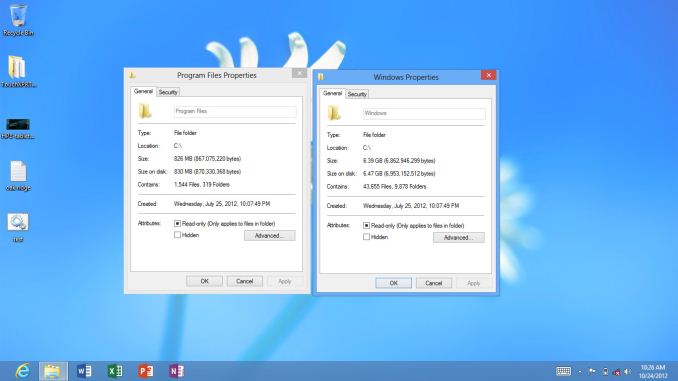
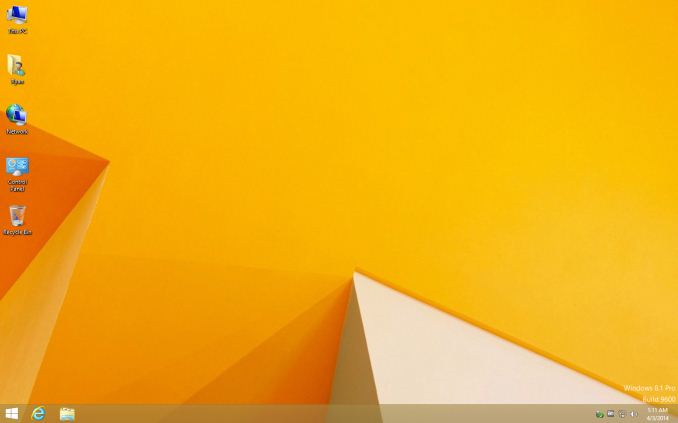
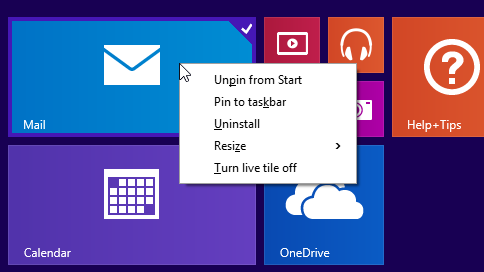
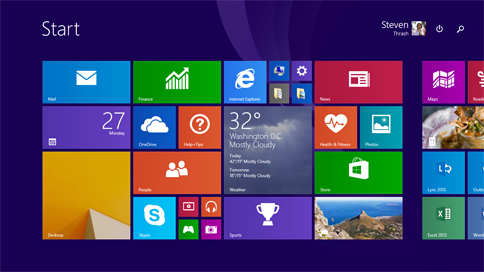
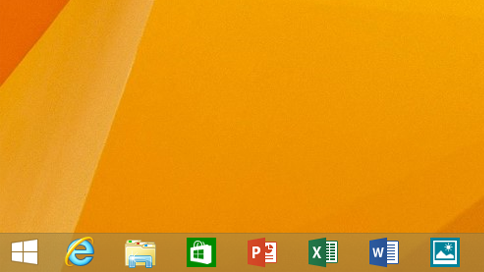
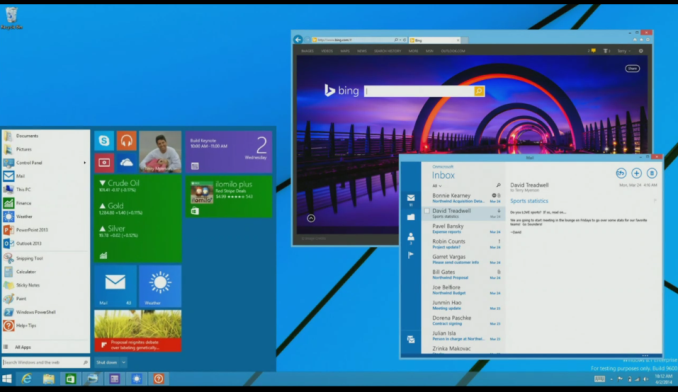

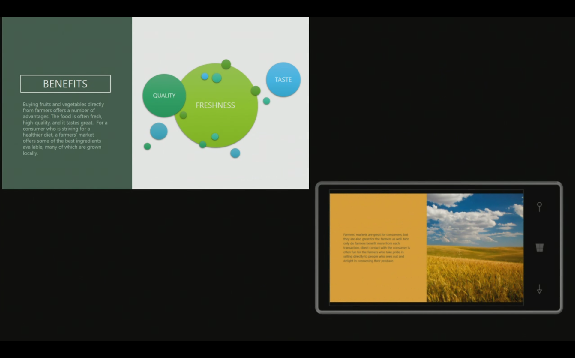








149 Comments
View All Comments
groberts116 - Friday, April 11, 2014 - link
I'm not going to challenge anyone on increases in application and system speed. To me it seems faster, I say seems because I haven't used any app to actually verify Windows 8 performance over windows 7. I will say that anyone with more than one monitor will definitely want Windows 8.1 because it provide more features for multi-monitor users than what are available with Windows 7. Also, there are more Windows 8 version upgrades coming before Windows 9. Not only that but the cost for upgrading from Windows 8 to Windows 9 might be less than upgrading from earlier versions of Windows. Finally there is the inclusion of RT in Windows 8 that will have more value because of Universal Windows applications that will begin showing up in Microsoft store after the release of Windows Phone 8.1, which will allow universal apps to run on Windows devices, which include: Windows 8.1 phones, Windows RT tablets as well as, Windows 8.1 PC's.OldTimer74 - Sunday, April 20, 2014 - link
acually, windows 7 is quite a bit faster than windows 8 if you know what "updates" to avoid..... in every update cycle, ALWAYS avoid the generic compatibility updates.... they are crap updates that slowly bog the old OS down.. microsoft has been doing this since XP. This way, once the new shiny OS comes out, it appears to perform better. Its very blatant, and underhanded, but it IS fact.... quite a few gamers have figured it out (those that still game on windows that is... as pointed out above... when was the last AAA title released for windows? Microsoft has pushed most gamers to their locked down console)Seeing how my pc is used less and less for gaming(my newest game is literlally 8 years old) and all these games run fine on wine.... linux is my next OS after win7 looses support.
frozen ox - Tuesday, April 8, 2014 - link
Vsync has nothing to do with not wanting high frame rates. It's for fixing stuttering and tearing for games where the developers will not fix it. Metro series for example. Without vsync, it's unplayable.novastar78 - Thursday, April 3, 2014 - link
Well for HTPC purposes there are a couple of reasons.1.) Windows 8.1 works better on the big screen then Win7. The Start Screen actually becomes usable as a Smart TV-like interface that is easy to use and makes an otherwise microscopic Start Menu (from Win7) very usable.
2.) The Windows 8 Netflix app for some 1080p goodness.
That's why I upgraded and it's worked out great on my Plasma.
Alexey291 - Thursday, April 3, 2014 - link
See I can get behind that.For HTPC win8 makes a lot of sense. Same goes for them semi-tablet things and even for laptops it would likely work out well enough.
For a desktop its a questionable proposition. IMO ofc.
augiem - Thursday, April 3, 2014 - link
The one thing I like is the return of the up arrow button in explorer. Oh, and you can now mount ISO files as discs out of the box, which is convenient. Task manager is somewhat nicer. Other than that, everything else is just a sidegrade or downgrade in my opinion. I've been trying for months to get used to Modern, but it simply just doesn't do what I need it to. I've resorted to building my own folder of programs that I keep on the desktop that I can categorize how I see fit. It's still clunky though because I have to remember to go find the program and add a shortcut there every single time I install something. Feels like going back to the Amiga / GEOS / Macintosh days opening folders to find your files. And I seriously hate how not all installs show up in All Programs -- I'm not 100% sure but I think anything that installs for "all users" will not show up there. UGH MS! If I'm stuck with Modern, at least let me organize my stuff in folders (that aren't always open in my face).haukionkannel - Thursday, April 3, 2014 - link
Yep! I have UHD display and win8.1 is much better than win7 in there. But there still are some problems left. Old programs don't scale so nicely (they don't do it win7 neither) and multimonitor support could be better. But all in all definitely upgrade from win7. I have high hopes for win9 for the rest upscale/resolution problems. I hope that by 2016 or 17 whenever win 9 will come out, the norm monitor is something else than 1080p...But as I said, even now it is getting better!
akdj - Friday, April 4, 2014 - link
Agreed. I've finally rid my Win7/XP partitions with 8.1...& as both an MS and OSx user, that's thee ONE challenge I'm still having on my Window's side of the coin. That said, I own three of the 15" rMBPs for our business (we're mobile audio/video production company in Alaska, have been for thirty years now...when everything was done 'on tape')...Apple truly nailed their scaling algorithm(s) in 10.8/10.9. .7 was a mess, especially with multi monitor support. Doing our coloring, editing and review sessions with clients, multi display....including but not limited to UHD or HiDPI. To me, this may be the most exciting and possibly hidden 'gem' with this update...and future SPs, which now maybe just old hat. No more service pack 14 month intervals. Instead, smaller, faster, more efficient and timely updates issued ...and as much as I love 'em both, ala Apple's '.' Program. They're incredibly quick these days with security, java and/or Trojan protection. As well as the RAW updates, lens corrections, printer support and continued refinement of Safari...to the extent it's become my favorite browser to use. On OSx. They've got to improve the iOS version though. As fast as it is, third party browsers are better on the iPhone and iPads.Microsoft took a BOLD step with 8. BUT, so has everyone else! Whether it's your new car stereo you can't figure out (7.5" LCD), your smart phone, tablets and their decimation of the traditional PC sale's figures...the computational paradigm is here. And now. And EXTREMELY cool to be a part of! Of course as a business owner, I've always found it beneficial to keep a 'day' job over the years with a family, mortgages and student tuitions, et al...I was lucky enough to start in radio toward the end of the 'golden years'. Reel to reel and wax pencils with razor blades, spinnin Rick Dees and ol Casey Casem off the Technic 1300s (1200's direct drive predecessor), the move to CD...and blessed to still be programming a group of six stations to this day....and as with all the media we grew up with becoming less and less relevant (TV, radio, print)---the aggregation into the social networks, blogs and forums, cloud storage and real world, low latency abilities to send 'audio' around the world with a click....from a PHONE! Android? iOS? Who CARES! Again...love and own both. My personal, the iPhone 5s. Business line is the Note 3. I can't get enough! Gave up drinking fifteen years ago and I think it was actually 'cheaper!' Lol
Better HiDPI support for our NECs and Eizos...PRETTY PLEASE MS?
blushrts717 - Friday, April 4, 2014 - link
I thought the same thing until I realized that you can't control the apps with a remote control. The Netflix app is excellent other than you can't control it with a remote.hero4hire - Thursday, April 3, 2014 - link
"Grown out of extreme overclocking" I'm going to hope you are talking about the margin between OS and not being patronizing about finding the best performance for $ or OC as a hobby. If you're vsync capped in demanding multiplayer games without overclocking then you're doing it wrong.